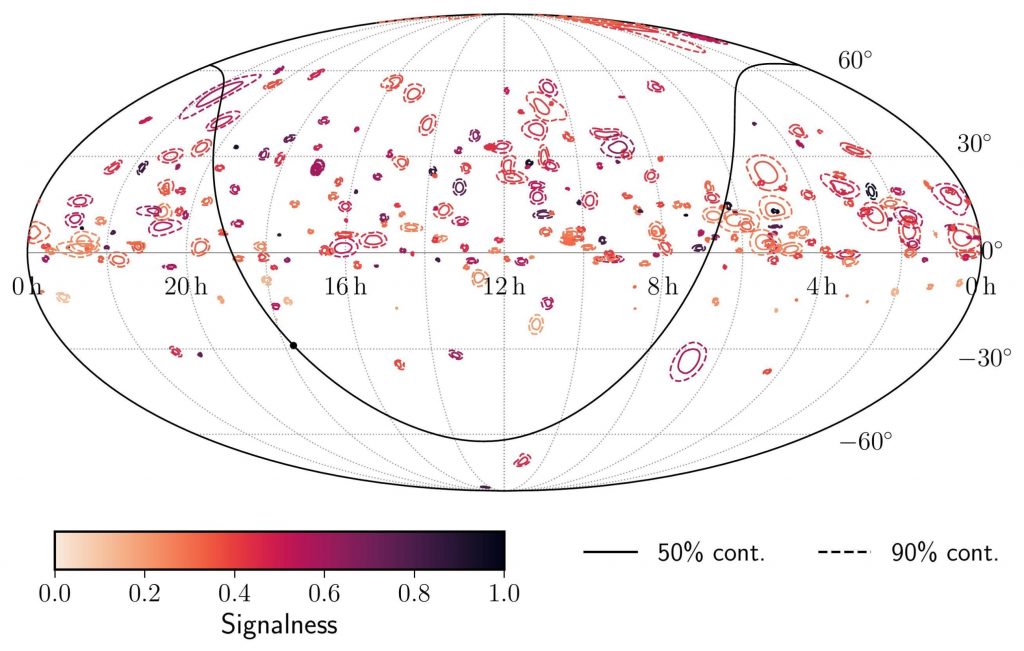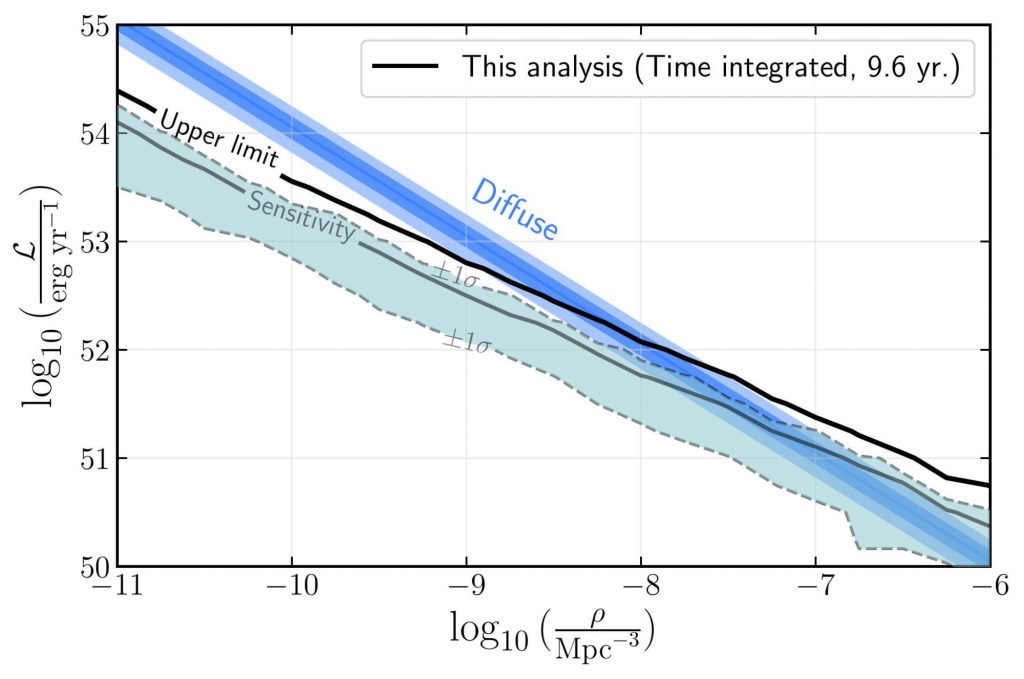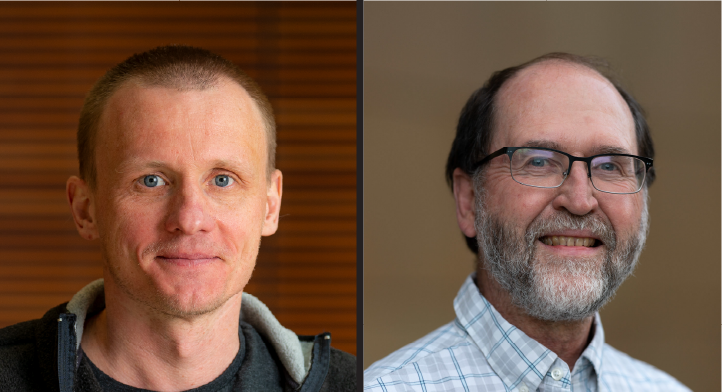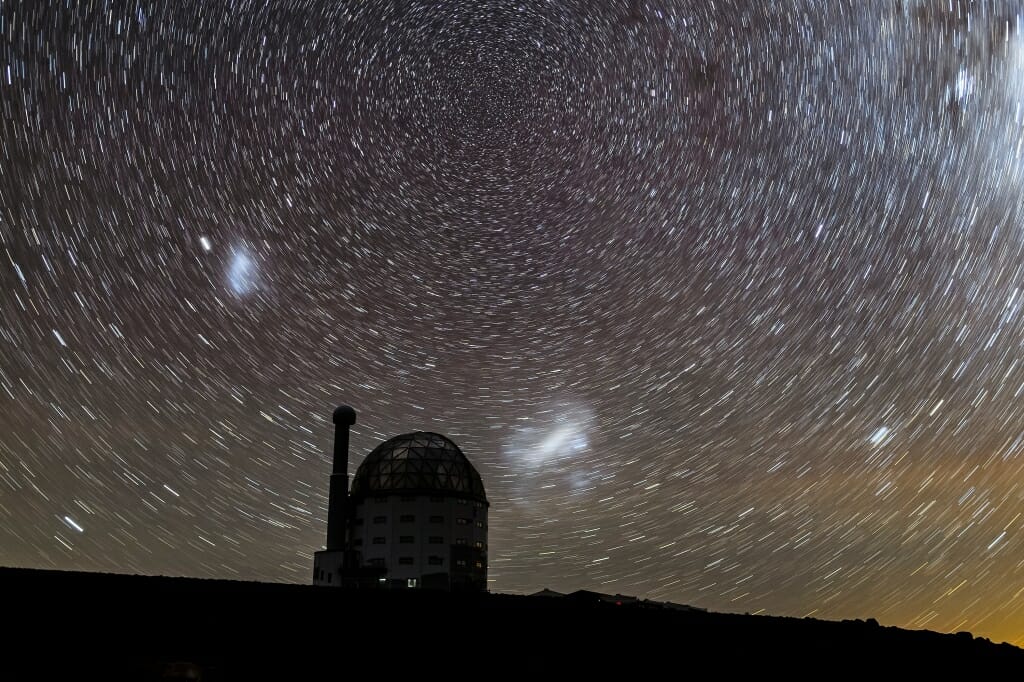This story was originally published by WIPAC
Back in 2013, the IceCube Neutrino Observatory—a cubic-kilometer neutrino detector embedded in Antarctic ice—announced the first observation of high-energy (above 100 TeV) neutrinos originating from outside our solar system, spawning a new age in astronomy. Four years later, on September 22, 2017, a high-energy neutrino event was detected coincident with a gamma-ray flare from a cosmic particle accelerator, a blazar known as TXS 0506+056. The coincident observation provided the first evidence for an extragalactic source of high-energy neutrinos.
The identification of this source was possible thanks to IceCube’s real-time high-energy neutrino alert program, which notifies the community of directions and energies of individual neutrinos that are most likely to have come from astrophysical sources. These alerts trigger follow-up observations of electromagnetic waves from radio up to gamma-ray, aimed at pinpointing a possible astrophysical source of high-energy neutrinos. However, the sources of the vast majority of the measured diffuse flux of astrophysical neutrinos still remain a mystery, as do how many of those sources exist. Another mystery is whether the neutrino sources are steady or variable over time and, if variable, whether they vary over long or short time scales.
In a paper recently submitted to The Astrophysical Journal, the IceCube Collaboration presents a follow-up search that looked for additional, lower-energy events in the direction of the high-energy alert events. The analysis looked at low- and high-energy events from 2011-2020 and was conducted to search for the coincidence in different time scales from 1,000 seconds up to one decade. Although the researchers did not find an excess of low-energy events across the searched time scales, they were able to constrain the abundance of astrophysical neutrino sources in the universe.

This research also delves into the question of whether the astrophysical neutrino flux measured by IceCube is produced by a large number of weak sources or a small number of strong sources. To distinguish between the two possibilities, the researchers developed a statistical method that used two different sets of neutrinos: 1) alert events that have a high probability of being from an astrophysical source and 2) the gamma-ray follow-up (GFU) sample, where only about one to five out of 1,000 events per day are astrophysical.
“If there are a lot of GFU events in the direction of the alerts, that’s a sign that neutrino sources are producing a lot of detectable neutrinos, which would mean there are only a few, bright sources,” explained recent UW–Madison PhD student Alex Pizzuto, a lead on the analysis who is now a software engineer at Google. “If you don’t see a lot of GFU events in the direction of alerts, this is an indication of the opposite, that there are many, dim sources that are responsible for the flux of neutrinos that IceCube detects.”

They interpreted the results using a simulation tool called FIRESONG, which looks at populations of neutrino sources and calculates the flux from each of these sources. The simulation was then used to determine if the simulated sources might be responsible for producing a neutrino event.
“We did not find a clear excess of low-energy events associated with the high-energy alert events on any of the three time scales we analyzed,” said Justin Vandenbroucke, a physics professor at UW–Madison and colead of the analysis. “This implies that there are many astrophysical neutrino sources because, if there were few, we would detect additional events accompanying the high-energy alerts.”
Future analyses will take advantage of larger IceCube data sets and higher quality data from improved calibration methods. With the completion of the larger next-generation telescope, IceCube-Gen2, researchers will be able to detect even more dim neutrino sources. Even knowing the abundance of sources could provide important constraints on the identity of the sources.
“The future is very exciting as this analysis shows that planned improvements might reveal more astrophysical sources and populations,” said Abhishek Desai, postdoctoral fellow at UW–Madison and co-lead of the analysis. “This will be due to better event localization, which is already being studied and should be optimized in the near future.”
+ info “Constraints on populations of neutrino sources from searches in the directions of IceCube neutrino alerts,” The IceCube Collaboration: R. Abbasi et al. Submitted to The Astrophysical Journal. arxiv.org/abs/2210.04930.

